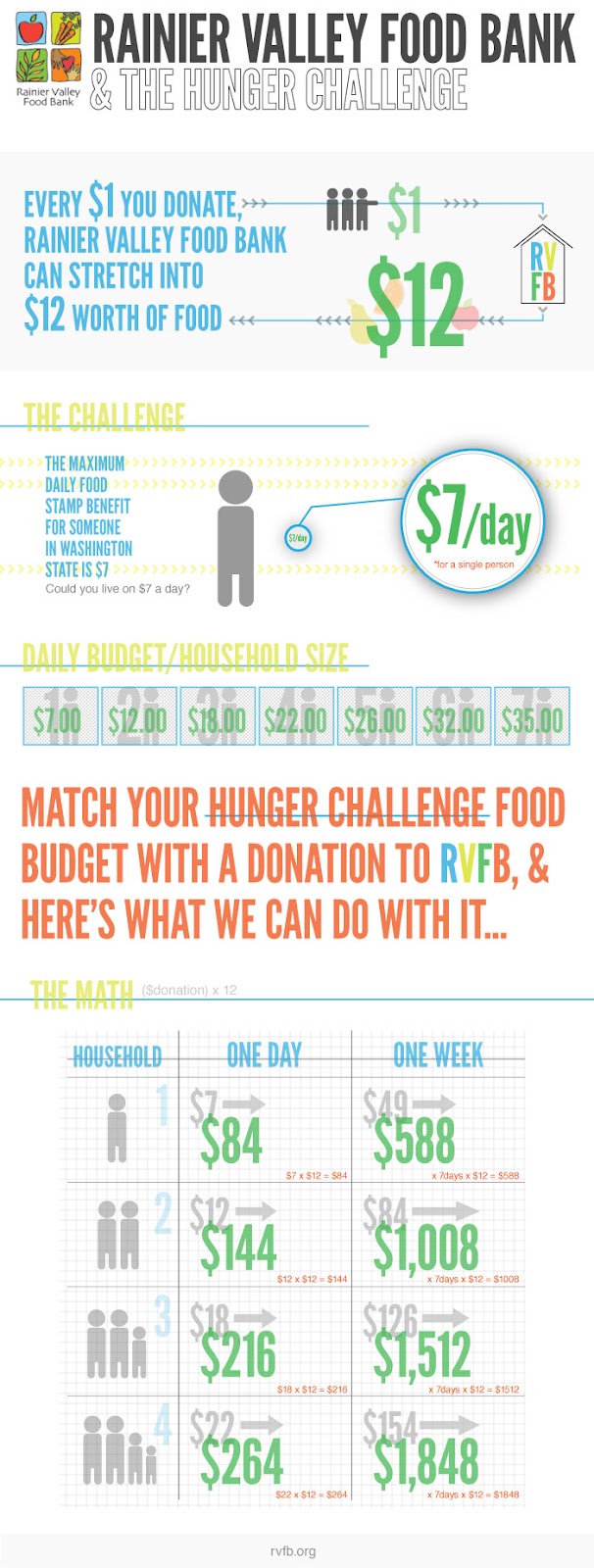 |
| Courtesy of USDA Economic Research Service |
Why were we choosing to limit ourselves to just $22 of food a day?
"But we have other food, Mommy," Sylvia said. "We have money to buy more food."
I assured her that we'd bought enough groceries to have healthy meals like we usually do. We'd just have fewer choices of fruits, veggies and snacks, less meat than we usually do. But we weren't going to go hungry.
The point, I said, was to put ourselves in the shoes of a family that isn't as fortunate as ours.
"So … we're going to honor their struggle?" asks the 5-year-old who just learned about Cesar Chavez in preschool.
"Yes," I said, all goosebumpy as I wondered if we really could last all week on a food stamp budget without feeling undernourished.
We did just fine for most of the week. But by Thursday, I was craving protein something fierce. We'd had rice and beans, milk, cheese, tofu, peanut butter -- but it wasn't cutting it. I almost caved Friday morning, but fought off the temptation to dump a handful of walnuts in my oatmeal.
For lunch, I had a large helping of leftover Ramen with tofu, broccoli and carrots -- but hours later felt so hungry, I wolfed down a PB&J the second I got home. I relished every bite of the tuna penne pasta salad I made us for dinner.
Yet a couple hours later, as my husband and I tried to ignore the aroma of garlic fries at a Sounders game, we busted our budget with a soft pretzel and bag of pistachios. It wouldn't be the final fizzling of willpower for us in our final two Hunger Challenge days.
I dipped into reserves that we weren't supposed to touch -- more than once. There were other violations, but I don't see them as utter failures. Throughout the week, we did a lot of thinking and talking about hunger, with each other, with friends, colleagues and family.
Food insecurity sounds like such an abstract term. But when you struggle to feed your family healthy, balanced meals … when you run out of food that you thought would last a whole week and wonder how you're going to make do with whatever you have left … that abstract term becomes something very real.
On Saturday, we splurged on a pound of ground beef at our neighborhood butcher shop, mixed it into leftover rice and beans and enjoyed a more filling dinner than we'd had all week.
As my daughter and I walked home from Bob's Quality Meats, I spotted a man I'd seen earlier in the day while volunteering at Rainier Valley Food Bank.
I can't remember if he had taken any of the cabbage, cucumbers, lettuce or parsley that I was passing out. He was one of hundreds people -- hundreds of my neighbors -- who had walked through the food bank that morning.
As our paths crossed, I felt glad that the food bank had been there for him.
The food bank's vision is a hunger-free Rainier Valley. But every Wednesday and Saturday, it has to be ready to welcome legions of hungry neighbors into a tiny warehouse stocked with a rich variety of nourishing foods.
My family gives to the food bank every month. It's not much, but every dollar counts.
This month, we're giving more.



















